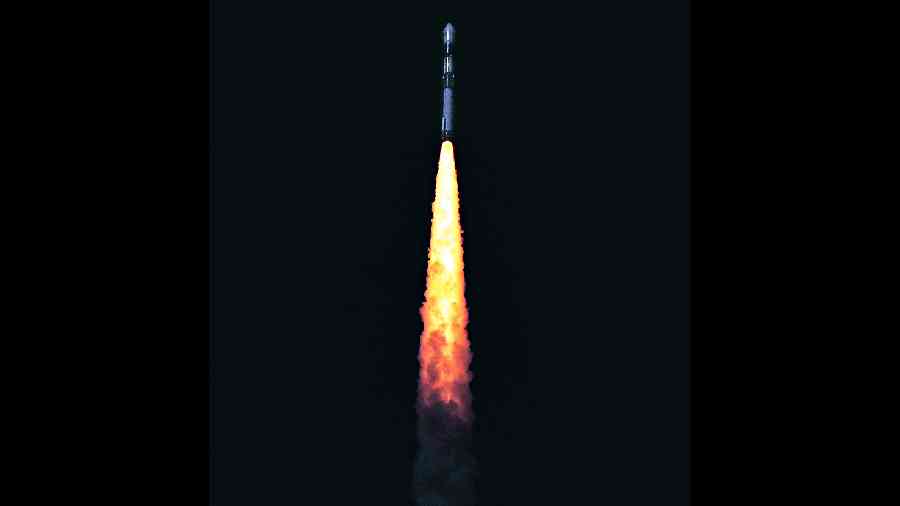An Indian workhorse rocket on Saturday ferried into space two satellites for customers in Singapore, the 57th flight of the Polar Satellite Launch Vehicle (PSLV) but specially engineered to lower cost and integration time.
The Indian Space Research Organisation (Isro) said the PSLV had “in a textbook launch” placed its two primary payloads — a 741kg radar imaging satellite and an 18kg data exchange satellite — precisely into their intended 586km orbit around Earth.
“The PSLV in its 57th mission has once again demonstrated its high reliability and its suitability for commercial missions of this class,” aerospace engineer and Isro chairman S. Somanath said after the launch from the Satish Dhawan Space Centre in Sriharikota.
He said Isro for this mission had adopted a PSLV configuration with several improvements to bring down the cost of the rocket as well as its integration time, or the period it takes to put together the rocket and payloads.
“The goal is to have increased production in times to come, especially when the industry (is expected) to take over from us to operate in large numbers,” Somanath said, a possible reference to India’s space policy that encourages enhanced industry role in routine space operations.
The space policy approved by the Union cabinet earlier this month says Isro will “transition out” from the current practice of being present in the manufacturing of operational space systems. Mature systems are to be transferred to industries for commercial exploitation.
The PSLV for this mission had undergone certain modifications, although without any changes in its basic design and architecture, the mission director S.R. Biju said. “We’ve done some trimming of the vehicle so that it can become more production-friendly,” he said.
The fourth stage of the PSLV rocket in this mission carries payloads that will be used as an orbiting platform for experiments for about a month. The platform draws power from solar panelsthat are intended to be deployed through ground commands.
One of the platform’s onboard payloads, designed by scientists at the Indian Institute of Astrophysics, Bangalore, is intended to serve as a low-cost and reliable device to accurately identify and measure star positions in space, the institute said.
The device is built from commercial off-the-shelf components and once tested in space “will be a fantastic alternative for future space missions to find out where they are pointed”, the institute said. The other onboard experiments developed by the Indian Institute of Space Technology and two space technology companies involve space communication and electric propulsionsystems.










